
Howard Merrill Shelley (1879-1956) was a playwright and theatrical press agent.

Howard Merrill Shelley (1879-1956) was a playwright and theatrical press agent.
Shelley was born in Philadelphia and attended Villanova College, now referred to as Villanova University. Villanova bestowed Shelley with an honorary Master of Arts Degree in 1956. [1]
Shelley's family lineage contained a number of notable figures. Howard's mother, Sophia Rittenhouse Shelley, is directly descended from the scientist and astronomer, David Rittenhouse. Howard's grandmother, Amanda McClellan is related by marriage to Benjamin Franklin and is directly related to the Civil War general, George Brinton McClellan. George Brinton McClellan the son of Dr. George McClellan and the grandson of James McClellan who was the son of General Samuel McClellan of the Revolutionary War. Samuel married Rachel Abbe, a direct descendant of Governor William Bradford of Plymouth, Massachusetts. Howard also had a second cousin named Kate Shelley who as a young girl risked her own life to save hundreds of lives by averting a potential train accident and became a household name in her own time.[ citation needed ] Also related to Shelley on his grandmother's side were John Test, who served as a sheriff under William Penn, [2] and William Roberts, one of the original settlers of Merion, Pennsylvania. [3]
Shelley drew from his family history and wrote a play based on it in 1914 called The Family Tree. Shelley took inspiration from the genealogical craze that was sweeping Philadelphia and other major cities in order to write the satirical work. [4] Prior to The Family Tree Shelley co-wrote a popular musical called The Beauty Doctor in 1904. An article in the Geneva Daily Times described this production as a piece “based on the beauty culture craze, which is handled in a broadly humorous way and is said to afford ample opportunity for hearty fun”. [5]
After writing satires for the stage, Howard went on to become a theatrical press agent. He wrote about society under the name Barclay Beekman for the New York Daily Mirror. Shelley was also employed by stars of the stage, including Lillian Russell, an actress and singer, and Luisa Tetrazzini, an Italian opera soprano, as well as Mary Garden, an opera star, and the Hammerstein family.[ citation needed ]
Howard Shelley died on December 11, 1956, after an illness of two years. He was seventy-seven.[ citation needed ]

Bryn Mawr is a census-designated place (CDP) located in Pennsylvania, United States. It is located just west of Philadelphia along Lancaster Avenue, also known as U.S. Route 30. As of 2020, the CDP is defined to include sections of Lower Merion Township, Montgomery County, as well as portions of Haverford Township and Radnor Township in Delaware County.

George Brinton McClellan was an American military officer and politician who served as the 24th governor of New Jersey and as Commanding General of the United States Army from November 1861 to March 1862. He was also an engineer, and was chief engineer and vice president of the Illinois Central Railroad, and later president of the Ohio and Mississippi Railroad in 1860.

Lower Merion Township is a township in Montgomery County, Pennsylvania, United States. It is part of the Philadelphia Main Line. The township's name originates with the county of Merioneth in north Wales. Merioneth is an English-language transcription of the Welsh Meirionnydd.

Radnor Township, often called simply Radnor, is a first class township with home rule status in Delaware County, Pennsylvania, United States.

David Rittenhouse was an American astronomer, inventor, clockmaker, mathematician, surveyor, scientific instrument craftsman, and public official. Rittenhouse was a member of the American Philosophical Society and the first director of the United States Mint.
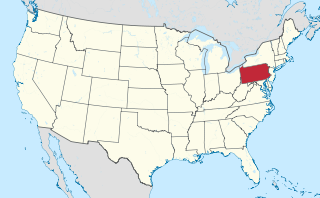
The Philadelphia Main Line, known simply as the Main Line, is an informally delineated historical and social region of suburban Philadelphia, Pennsylvania. Lying along the former Pennsylvania Railroad's once prestigious Main Line, it runs northwest from Center City Philadelphia parallel to Philadelphia and Lancaster Turnpike, also known as U.S. Route 30.
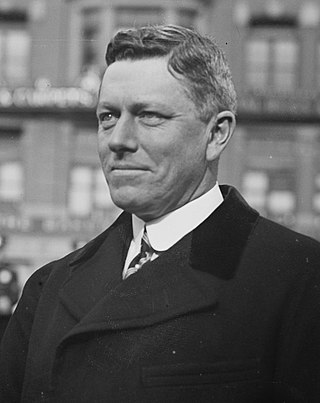
George Brinton McClellan Jr., was an American politician and historian. He was elected as the 93rd Mayor of New York City, serving from 1904 to 1909. He was the son of Civil War general George B. McClellan, who was an 1864 Democratic presidential candidate.

Rodolphe Meyer de Schauensee was a Swiss-American ornithologist.
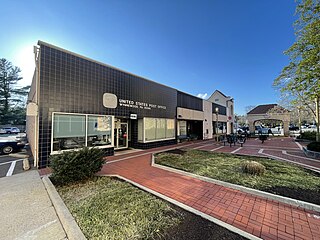
Wynnewood is a suburban unincorporated community, located west of Philadelphia, straddling Lower Merion Township in Montgomery County, Pennsylvania and Haverford Township in Delaware County, Pennsylvania, United States.

Penn Valley is an unincorporated community located within Lower Merion Township, Pennsylvania, United States. Penn Valley residents share a zip code with Merion, Narberth, or Wynnewood because the community does not have its own post office. However, Penn Valley is a distinct community whose civic association demarcates its boundaries with iconic signs featuring William Penn and a farmhouse in blue or red on white, dating from 1930.

Thomas Wynne was personal physician of William Penn and one of the original settlers of Philadelphia in the Province of Pennsylvania. Born in Ysceifiog, Wales, where his family dated back seventeen generations to Owain Gwynedd, he accompanied Penn on his original journey to America on the ship Welcome.
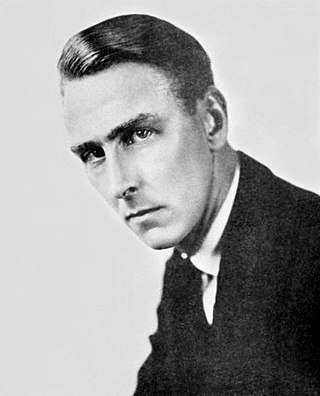
Percy Marmont was an English film actor.
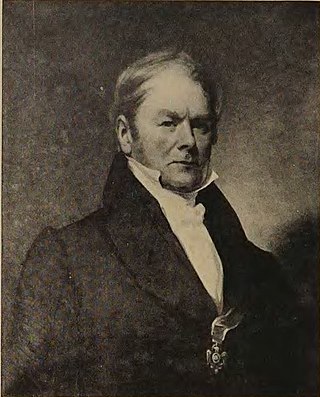
Patrick Hayes was an Irish-born American seaman and businessman.

George Brooke Roberts was a civil engineer and the fifth president of the Pennsylvania Railroad (1880–96).
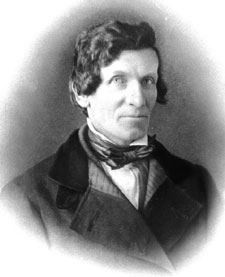
George McClellan was a 19th-century American surgeon. He is best known for founding the Jefferson Medical College and the Medical Department of Pennsylvania College, and his pioneering work in surgery, including writing a widely used textbook.
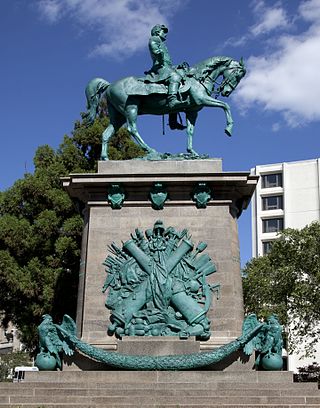
Major General George B. McClellan is an equestrian statue in Washington, D.C. that honors politician and Civil War general George B. McClellan. The monument is sited on a prominent location in the Kalorama Triangle neighborhood due to efforts made by area residents. The statue was sculpted by American artist Frederick William MacMonnies, a graduate of the École des Beaux-Arts whose best known work is a statue of Nathan Hale in New York City. MacMonnies was chosen to design the statue following a lengthy competition organized by a statue commission, led by then Secretary of War William Howard Taft. The monument was dedicated in 1907, with prominent attendees at the ceremony including President Theodore Roosevelt, New York City mayor George B. McClellan Jr., politicians, generals and thousands of military personnel.
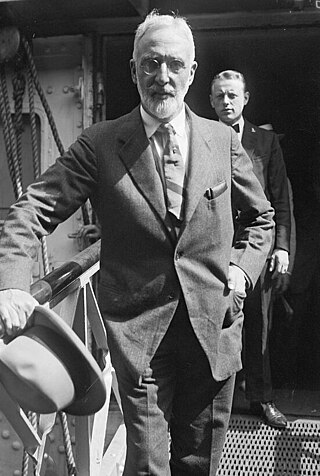
George Fort Gibbs was an American author, illustrator, artist, and screenwriter. As an author, he wrote more than 50 popular books, primarily adventure stories revolving around espionage in "exotic" locations. Several of his books were made into films. His illustrations appeared prominently in such magazines as The Saturday Evening Post, Ladies' Home Journal, Redbook and The Delineator. He also illustrated some of his own novels, and the novels of others. As a painter he produced many portraits, and painted murals for Pennsylvania Station and Girard College in Philadelphia. His screenwriting credits include a film about the life of Voltaire.
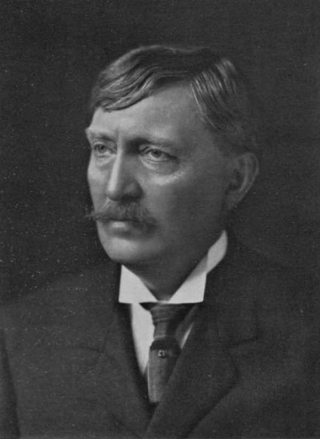
George McClellan, M.D. was an American medical doctor and anatomist known for his anatomical drawings. He is the grandson of George McClellan, also a doctor.

Pencoyd was a historic house and farm in Bala Cynwyd, Lower Merion Township, Montgomery County, Pennsylvania. Located along the north side of what is now City Avenue, the farm originally stretched from the Schuylkill River to Conshohocken State Road. Settled by John Roberts in 1683, his descendants owned the property for 280 years. The house was built c.1684–1690, and demolished in 1964.

Anna Shipley Cox Brinton was an American classics scholar, college administrator, writer, and Quaker leader, active with the American Friends Service Committee (AFSC).